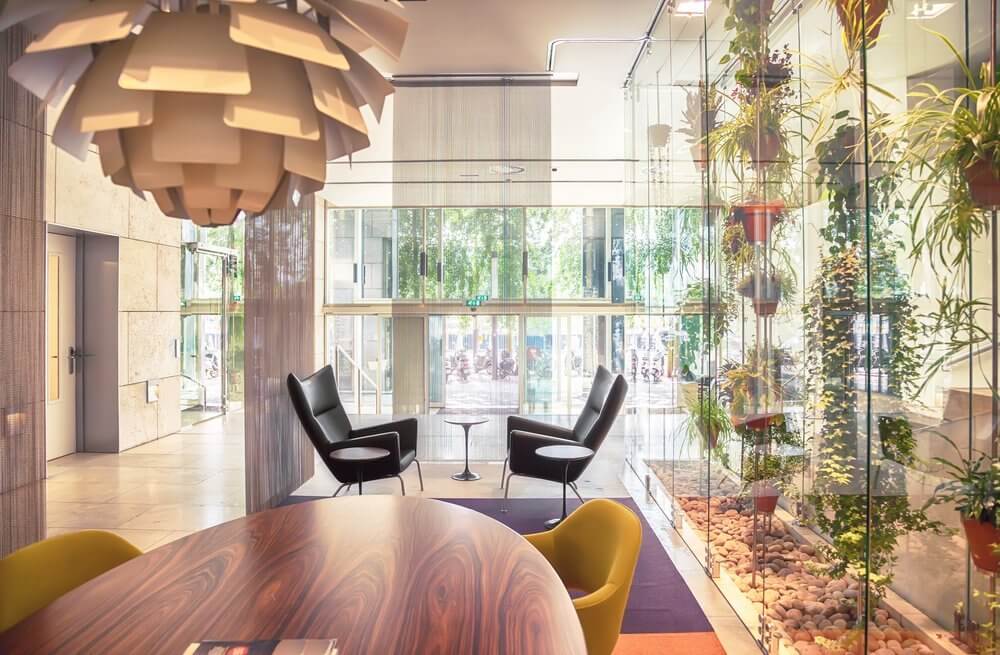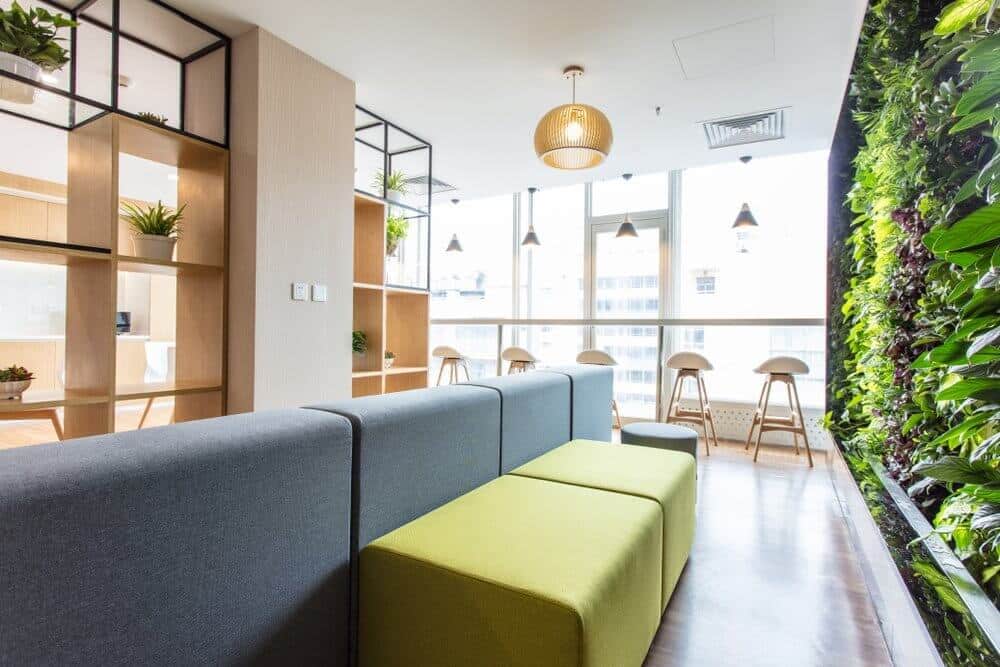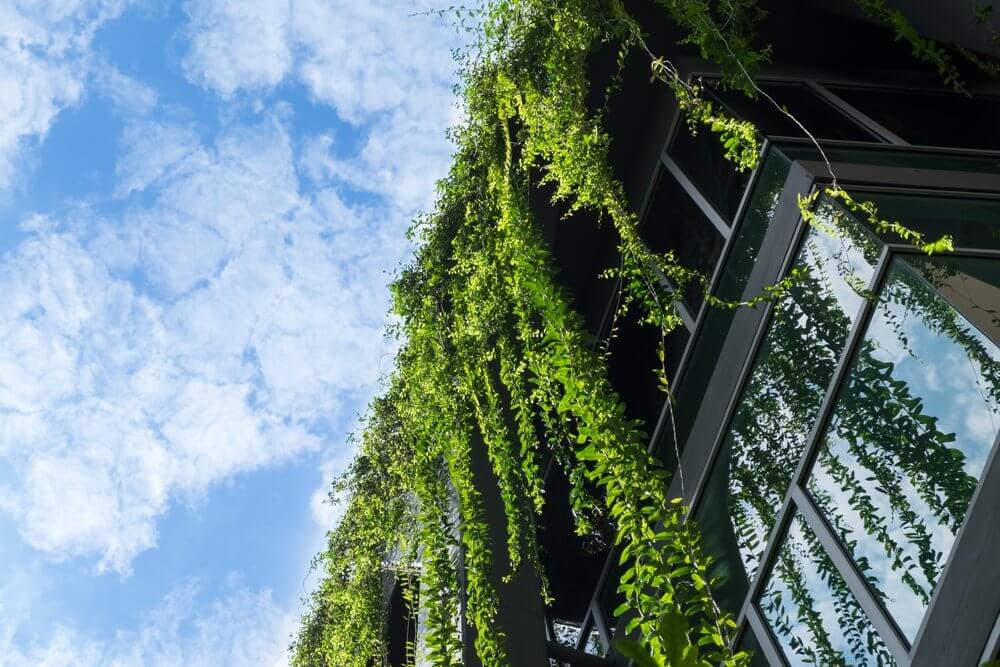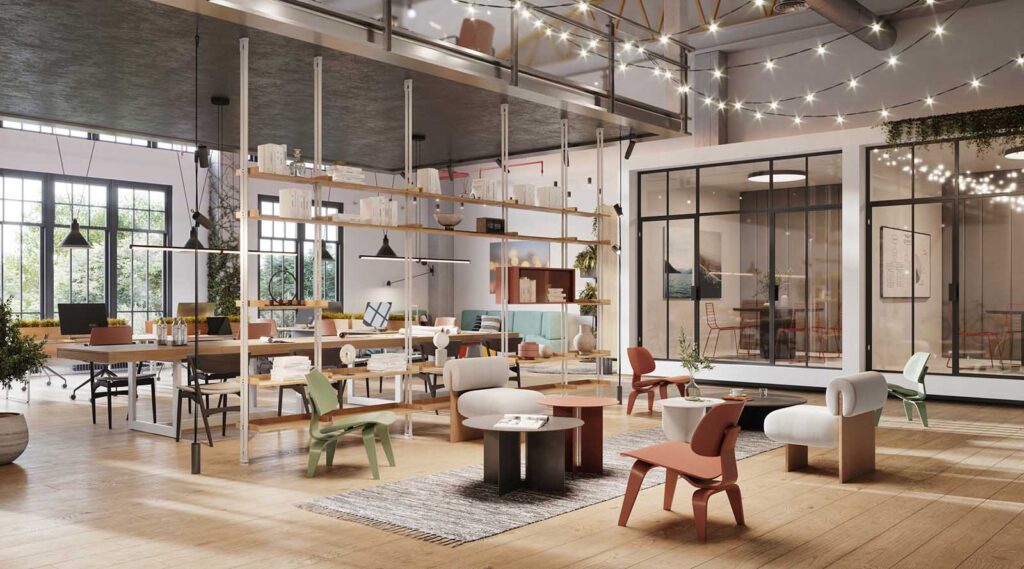In a 2015 piece on the intricacies of biophilic design, architecture magazine Metropolis lays out a solid description of this trending design ethos by explaining what it isn’t. Where some might pay lip service to nature with sporadic potted plants or a fake tree or two in the lobby, the architecture magazine says, biophilic workplaces strive to help their inhabitants reconnect with the biological world. By fostering “repeated and sustained engagement with nature,” stakeholders can reinvigorate a workforce that has been hungry for more face time with Mother Nature since the Industrial Revolution.
If that distinction sounds a little high-concept on paper, its real-world applications have shown enough promise to turn biophilic design into a bonafide office trend. Its purported ability to boost productivity and employee well-being is enough to catch any facility manager’s attention. Throw in its reported ability to boost creativity and reduce both absenteeism and presenteeism—missing too much work and coming in to work when one shouldn’t, respectively—and you have a design movement with numerous practical benefits to go along with its aesthetic advantages.
Biophilia: what’s in a name?

If you’re looking for an even better understanding of biophilic design, look no further than its name. Described by famed psychologist Edward O. Wilson as “the urge to associate with other forms of life,” biophiliais, in many ways, a need created by the resounding lack of natural forms in many modern workplaces.
Of course, there aren’t many offices willing to convert their boardrooms to functional greenhouses—and to be clear, biophilic design isn’t just about cramming plants wherever they’ll fit. Instead, as noted by Metropolis, a biophilic workplace is one that creates a “good habitat for people as biological organisms inhabiting modern structures,” giving heed to their needs as living creatures and as components of a large, less-natural organism (i.e. a business).
Considering the importance of habitat when it comes to productivity, businesses have endless options when weighing a potential biophilic makeover. Living organisms—see the plant walls springing up in design and architecture magazines the world over—are one way to effect a nature-friendly change, as are images, shapes and colors that evoke nature. In addition to aesthetic factors, air quality, ventilation, acoustic considerations and lighting (both artificial and natural) also have their respective places. By revisiting your budget, space, current design tastes and employee habits with an eye to bringing in more of the outdoors, you can harness the tenets of biophilia for your office.
Ready to get biophilic? Consider these points

While biophilic-heavy designs make for stunning photos on design websites, a subtle approach can also yield results. The trick is in building a space that invokes a natural feeling without getting in employees’ way, and utilizing elements that serve multiple purposes to derive the most value from your design decisions.
Plants represent a solid example of this approach, undoubtedly a reason numerous leading companies have made them a central point of their design strategies. Besides providing interesting texture and visual appeal, they can have a significant positive impact on air quality, reducing CO2 by up to 20%. On top of all that, plants are highly versatile. Whether you use dedicated planters, assemble a plant shelf or take over an oddly-shaped unused space, chances are there’s a plant that will flourish there and look good while doing it.
Running water can also pair a strong visual impact with productivity benefits. The sound of water splashing—via a standup waterfall display or base-of-the-wall pond installation, for two examples—dampens background noise and has a noted positive effect on employee mood. While water features may require a bit of work to implement and maintain, noisy offices and those with enough space to support a water-focused installation may wish to consider bringing one in.
Then there’s lighting. Natural light is an obvious first choice in a design philosophy centered on nature, and products like skylights and solar tubes give stakeholders plenty of ways to harness it in many office layouts. That said, don’t overlook artificial options.Task lights on desks—that cover the entire light spectrum—can serve as great secondary sources, augmenting natural light with brighter, sunlight-simulating illumination.
As a final biophilic tip, embrace texture and color. You may not want to coat every surface in a natural-wood pattern, but bringing a unified color across your spaces can help the biophilic aspects of your design stand out. An office using light woods for work surfaces such as desks could source chairs and wall frames in a similar shade, while a lounge with heavy plant coverage could carry greens and browns onto the walls. Think of the colors of your natural elements as links to the rest of the office.
It’s only natural
Ultimately, biophilic design can be as obvious or subtle as you wish. The goal here is consistency, not necessarily coverage: if your workspace offers employees a chance to connect with nature visually or through texture or sound, it’s already got a leg up on the competition. There’s plenty of biophilic inspiration to be found online—get in touch with your natural side, ask your employees what they’d like to see, and get ready to embrace a philosophy that invites nature inside instead of keeping it at the door.
Like your office design, we believe your FM software should improve employee productivity and happiness. That’s why we’ve created the best platform on the market to help you accomplish daily tasks faster. Request your free OfficeSpace demo today.
Photo Credits: Shutterstock / korkeng, Shutterstock / luchunyu, Shutterstock / design.at.krooogle




